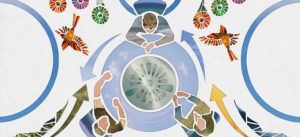
CIPD in Wales Awards 2024 Best Learning and Development Initiative
We had a fabulous evening at the CIPD in Wales awards on Friday! We wined, we dined and we danced the night away. It was fantastic… Read more »
Email: [email protected] Tel: 08000 489235 LinkedIn
I a m often asked what a Neutral Assessment is, how and when you would use it, what the process involves and what are the benefits. Whenever we have used it, we have received very positive feedback and at the end of last year, one of our clients won a CIPD Wales award for Employee Engagement following our working with them in this way.
m often asked what a Neutral Assessment is, how and when you would use it, what the process involves and what are the benefits. Whenever we have used it, we have received very positive feedback and at the end of last year, one of our clients won a CIPD Wales award for Employee Engagement following our working with them in this way.
We thought it would be helpful to share examples of the types of situations where we have used this along with the benefits of doing so.
Case Study 1 – employee engagement / CIPD Wales gold award winner
The Digital Services Team had consistently low engagement scores. There had been several changes in leadership, evidence of a general sense of dissatisfaction in the area and a lack of common purpose. There were high levels of turnover and absence and there was a negative impact on service delivery.
We agreed terms of reference with the senior management team. It took some time and effort to gain staff trust and ultimately, we achieved a high level of participation. We met with staff to gather viewpoints on what could be done differently, and our independence ensured that staff could provide honest feedback in a safe environment
There were some tough messages for the leadership team to hear. A key to the success of the project was the openness with which these tough messages were taken on board. Bravely, the whole report (warts and all) was shared with all of the staff. There was real openness and transparency and all staff were then engaged in developing an action plan for implementation of the recommendations.
The results of the Neutral Assessment and implementation of the action plan have been fantastic. These include an increase in the engagement scores, a decrease in staff turnover (from 10% to less than 1%), decrease in sickness absence (by 3.5%), people survey results increasing, better collaboration between teams, improved performance management, the introduction of new staff / team initiatives and increased organisational improvement and customer service.
Case Study 2 – concerns of a culture of bullying & harassment
Concerns arose following a rise in the number of individuals indicating that they did not consider that allegations of bullying and harassment and/or inappropriate behaviour were being dealt with satisfactorily.
We met with the management team to agree terms of reference. We then invited team members to engage to provide their viewpoints on the underlying causes and what needed to be done to improve. Views were sought initially via a confidential survey. For those that wished to participate further there were options for confidential meetings, telephone/skype calls or provision of further information in writing.
We were able to gain high levels of participation and engagement in the process and collated the information into a non-attributable report with recommendations. Some of the main themes identified were low levels of trust in complaints against senior management being dealt with or taken seriously, fear of raising complaints and concerns regarding using formal processes to resolve issues.
Feedback was provided with recommendations for action. This included a need for very clear support from “the top”, clarity over what constitutes inappropriate behaviour, a review of support available to staff who felt they had a concern they wished to raise and reviewing performance measures and feedback processes.
Case Study 3 – rebuilding team relations following a formal process
We were asked to assist with enabling all concerned to move on from recent events; this included staff returning to work following absence and formal processes, adverse impacts on team members and restabilising working relationships. We met with team members individually and confidentiality to gather viewpoints and opinions of what needed to happen. A recurrent theme was an unwillingness within the team to provide open and honest feedback; as a result, by the time the situation came to management and HR attention it had escalated significantly. It was also clear that there was a team divide.
A mediation took place between two employees who had been impacted significantly. This was a difficult process for both as both felt extremely hurt by the others actions; the employees were able to work through this and gain a better understanding of the impact of behaviours and how the situation had arisen. Genuine apologies were given on both sides.
A team meeting was then facilitated. This included statements from the two employees who had taken part in mediation and discussions around barriers to open feedback and how these could be overcome. An action plan was agreed and implemented. The team are now working together effectively and the return to work was successfully facilitated.
This process comprised a Neutral Assessment with follow up support for mediation and team facilitation. This demonstrates the need to be flexible when it comes to resolving conflicts and the importance of having a wide range of conflict resolution tools in the box to call upon!
A copy of our guidance note on Neutral Assessments is here. If you think you have a situation which might benefit from a Neutral Assessment or group / team facilitation or would just like some further information on how these processes work, please do not hesitate to contact us at [email protected] 0117 373 9192 (England) or [email protected] 01446 760993 (Wales) to discuss. We would be delighted to be involved in many more successful projects and who knows your organisation could be next in line for an award!!
Follow us on LinkedIn, where we provide details of latest news, upcoming events and links to interesting articles around the topic of conflict resolution, mediation and training.
The report was very professional, it dealt with all the issues raised and was particularly thorough. It clearly took the time to fully understand all of the issues and background. It was complex but the report really helped to break it down and I’m hoping we can progress in a positive manner following the recommendations.
Group HR Manager, Energy Sector |

We had a fabulous evening at the CIPD in Wales awards on Friday! We wined, we dined and we danced the night away. It was fantastic… Read more »
3 new members of the Resolution at Work team have recently become certified in the fantastic Conflict Dynamics Profile model for conflict coaching, and we have… Read more »
It is not uncommon for conflict to arise between different teams. This can have considerable impact on both individuals and performance. A number of approaches can be used in this sort of scenario, including neutral assessment, team facilitation and group mediation.
Agreement could not be reached to enter into mediation in this situation and therefore coaching was an alternative support provided to one of the parties. The relationship between a majority shareholder and a shareholder/director was causing conflict. The relationship would be ok at times but disagreements would flare up from time to time and this was beginning to impact on the business.